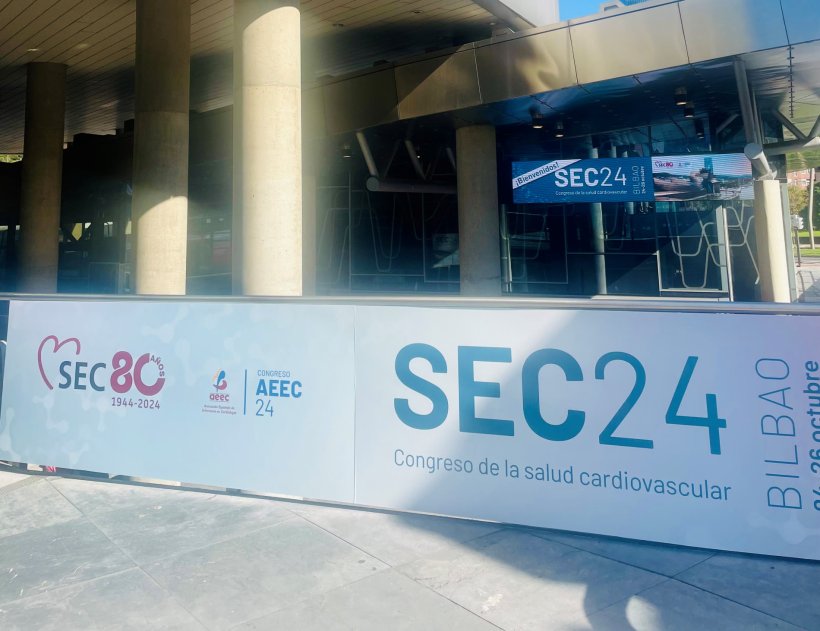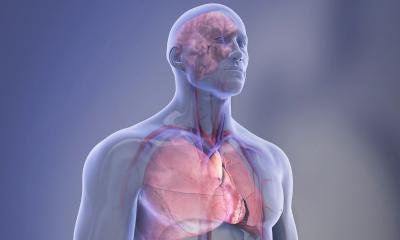© yodiyim – stock.adobe.com
Article • Research presented at Spanish cardiology congress
New data on heart attack puts pressure on governments to promote social justice
Environmental factors such as low temperatures and carbon monoxide levels in the air have long been underestimated as risk factors for triggering a heart attack. At the Spanish Cardiology Congress (SEC24) in October in Bilbao, an expert presented new research results, which offer insights on the disease causes and put pressure on policy makers to reduce pollution and promote equal access to energy.
By Mélisande Rouger

The data, which was acquired in a retrospective study, sheds light on population risk factors that are often disregarded, according to main author Prof. Alberto García-Lledó, Head of the cardiology service at the Príncipe de Asturias hospital in Madrid. ‘In infarction, we usually think of individual factors such as cholesterol or work that affect an individual, but there are also environmental factors that affect society,’ he said. ‘These variables are those that periodically increase the risk of infarction when certain diseases come along, such as the flu in autumn.’
Shattering a myth
García-Lledó’s team has observed heart events in the Madrid region to identify the environmental factors that can influence the risk of suffering from a heart attack. The researchers found that fewer heart attacks occur in August than in November, thereby contradicting a longtime belief related to heat waves. ‘Temperature has an influence, but heat waves are not associated with infarction,’ he said. ‘In Madrid, the colder it gets, the higher the risk. With heat waves, we were able to demonstrate that there was no increase in the risk of suffering from a heart attack.’
With low temperatures, vasoconstriction occurs to avoid cooling the inside of the body. Adrenaline is secreted, and the skin is left with less blood to keep it warm inside the body. The process creates increased tension in the body that is similar to the mechanism of stress. ‘The cold causes stress and this reaction increases tension of the arteries as they tend to close,’ he explained. The phenomenon, called snow attacks, is a well-referenced risk factor of myocardiopathies.

Another classic trigger for cardiovascular events is the association with respiratory infections, but there used to be a problem of statistical analysis differentiating between cold and flu, he explained. ‘In our continental climates, flu and cold go together,’ he said. ‘Determining the relative contribution of one and the other – whether it is the flu or the cold that influences the risk – was an important issue to demonstrate.’
García-Lledó and his team have shown that both influenza and cold are independent risk factors in triggering myocardial infarction. In addition, they have observed that pollution factors, some of which tend to cluster with cold temperatures, also present a risk for heart attack. ‘Cold, flu and carbon monoxide act as independent associates in the risk of suffering a heart attack. All three have a pathophysiological explanation,’ he said.
Vaccination and fairer health policies
We are working to incentivize social assistance, because the risk of heart attack is higher in populations with higher unemployment rates and lower income
Alberto García-Lledó
An efficient strategy to decrease those risk factors is to get vaccinated against the flu, a vaccination that also protects against other cardiovascular events such as stroke. ‘We have evidence that of all respiratory infections, the influenza virus is the one that is most correlated with cardiovascular accidents,’ he said. ‘The flu vaccine has been around for many years, and we have a lot of experience and published work on its efficacy. In the general population, the vaccine reduces the risk of myocardial infarction and the risk of stroke.’ Vaccination in Spain is among the best in Western Europe, third only to the UK and Portugal’s that is close to or exceeding 60%, the target set by the WHO.
The importance of social justice
The new vaccine against the Respiratory Syncytial Virus (RSV) could also prove efficient on population risk. ‘All respiratory viruses and pneumococcus have an influence,’ said García-Lledó. ‘Any infection increases the risk of heart attack and stroke because it produces inflammation of atherosclerosis plaques.’
The most relevant part of the study, however, is how it could help implement health policies that reduce both pollution and energy poverty, García-Lledó believes. ‘We will have to support the reduction of pollution and the promotion of social justice, so that the less wealthy have access to heating,’ he said. ‘We are working to incentivize social assistance, because the risk of heart attack is higher in populations with higher unemployment rates and lower income. These issues have to do with social policy, and are also relevant for the clinician, in order to promote vaccination against influenza.’
Profile:
Alberto García-Lledó is Head of the cardiology service at the Príncipe de Asturias hospital in Madrid, Spain. He is also an associate professor of cardiology at Alcalá de Henares University near Madrid. His special interests are general cardiology and epidemiology.
17.12.2024











